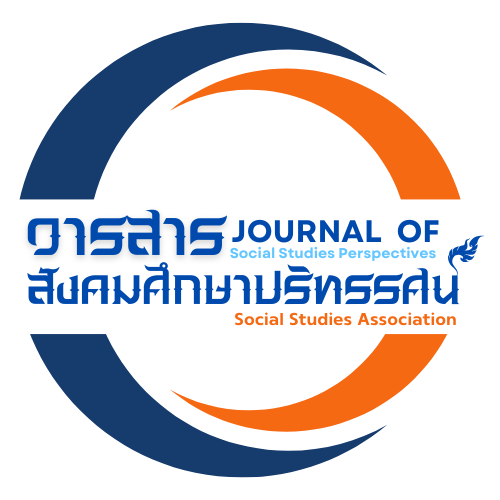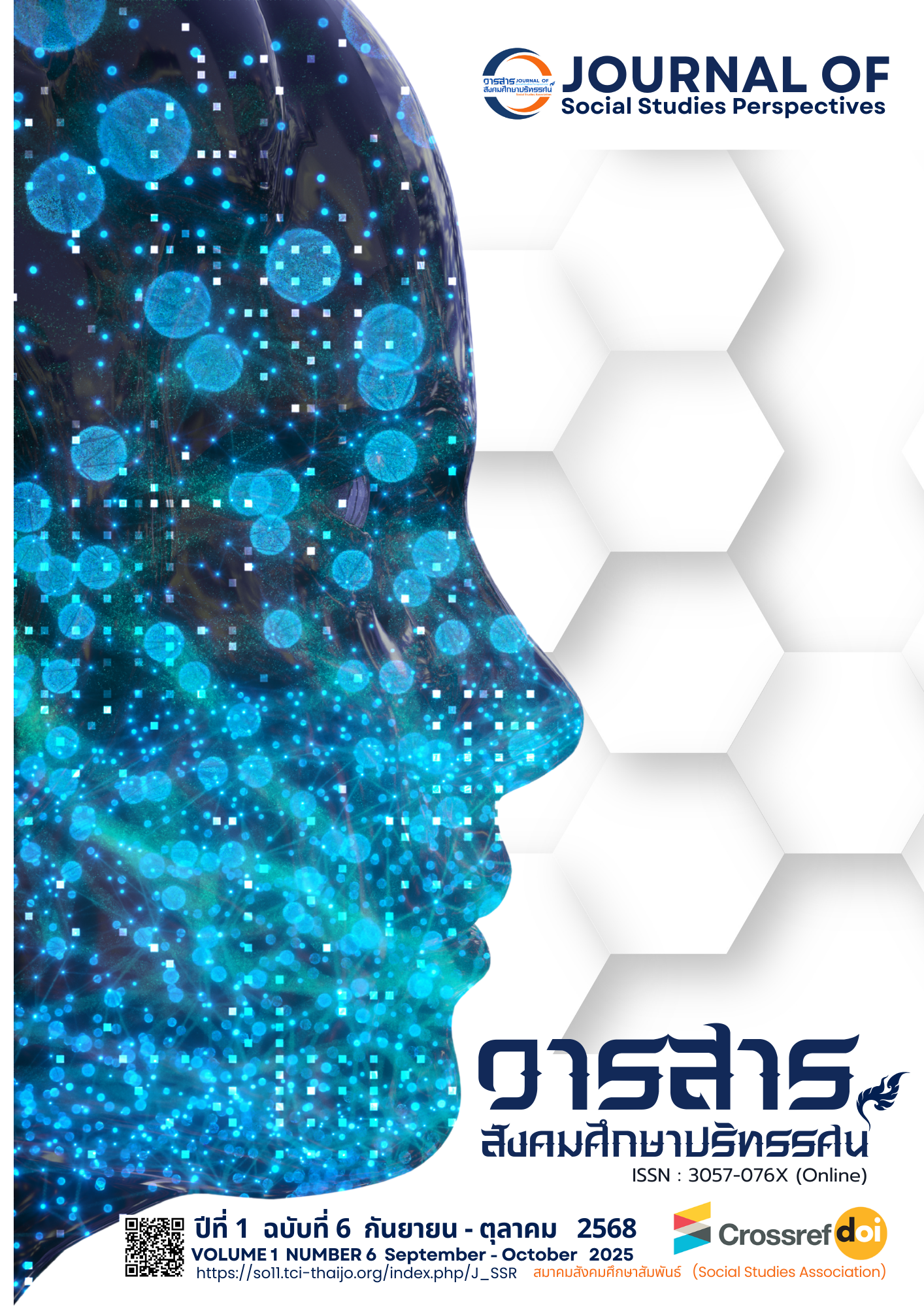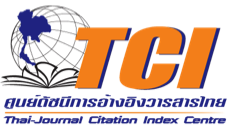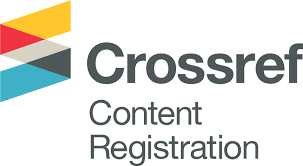การวิเคราะห์เปรียบเทียบทฤษฎี Z และโมเดล PERMA เพื่อมุมมองใหม่ในการพัฒนาองค์กรในศตวรรษที่ 21
DOI:
https://doi.org/10.64186/jsp1832%20คำสำคัญ:
ทฤษฎี Z, โมเดล PERMA, การพัฒนาองค์กร, การบริหารทรัพยากรมนุษย์, ความเจริญงอกงามในองค์กรบทคัดย่อ
บทความวิชาการนี้นำเสนอการวิเคราะห์เปรียบเทียบระหว่างทฤษฎี Z และโมเดล PERMA เพื่อเสนอมุมมองใหม่ในการพัฒนาองค์กรในศตวรรษที่ 21 โดยชี้ให้เห็นว่าการพัฒนาองค์กรยุคใหม่ต้องเผชิญกับความท้าทายในการสร้างสมดุลระหว่างประสิทธิภาพและความเป็นอยู่ที่ดีของพนักงาน ผู้เขียนนำเสนอ 1) แนวคิดหลักของทฤษฎี Z 2) องค์ประกอบสำคัญของโมเดล PERMA 3) การวิเคราะห์เปรียบเทียบจุดแข็งและข้อจำกัดของทั้งสองแนวคิด 4) แนวทางการผสมผสานทฤษฎี Z และโมเดล PERMA เพื่อการพัฒนาองค์กร และ 5) กรณีศึกษาการประยุกต์ใช้แนวคิดผสมผสานในองค์กรสมัยใหม่ ทฤษฎี Z เน้นการสร้างความผูกพันระยะยาวระหว่างองค์กรและพนักงาน การตัดสินใจแบบมีส่วนร่วม และการพัฒนาทักษะที่หลากหลาย ในขณะที่โมเดล PERMA มุ่งเน้นการสร้างความเจริญงอกงามของบุคคลผ่านองค์ประกอบ 5 ประการ ได้แก่ อารมณ์เชิงบวก ความผูกพัน ความสัมพันธ์ ความหมาย และความสำเร็จ การวิเคราะห์เปรียบเทียบพบว่าทั้งสองแนวคิดมีจุดแข็งที่สามารถเสริมซึ่งกันและกัน โดยทฤษฎี Z ให้กรอบการจัดการที่ชัดเจน ขณะที่โมเดล PERMA เน้นการพัฒนาความสุขและความเจริญงอกงามของบุคคล บทความนี้นำเสนอแนวทางการผสมผสานทั้งสองแนวคิดเพื่อสร้างองค์กรที่มีประสิทธิภาพและส่งเสริมความเป็นอยู่ที่ดีของพนักงาน โดยเสนอกลยุทธ์การพัฒนาทรัพยากรมนุษย์ที่เน้นทั้งผลการปฏิบัติงานและความเจริญงอกงามส่วนบุคคล การสร้างวัฒนธรรมองค์กรที่ส่งเสริมการมีส่วนร่วมและความผูกพัน ตลอดจนการพัฒนาระบบการประเมินผลที่ครอบคลุมทั้งด้านผลงานและความเป็นอยู่ที่ดีของพนักงาน องค์ความรู้จากบทความนี้จะเป็นประโยชน์ต่อผู้บริหารและนักพัฒนาทรัพยากรมนุษย์ในการออกแบบกลยุทธ์การพัฒนาองค์กรที่ตอบโจทย์ความท้าทายในศตวรรษที่ 21
เอกสารอ้างอิง
Aithal, S., & Kumar, S. (2016). Comparative analysis of Theory X, Theory Y, Theory Z, and Theory A for managing people and performance. International Journal of Scientific Research and Modern Education, 1(1), 803–812.
Aydin, O. T. (2012). The impact of Theory X, Theory Y and Theory Z on research performance: An empirical study from a Turkish university. International Journal of Advances in Management and Economics, 1(5), 24–30.*
Chantathanont, N. (2022). Case study: Organizational commitment and work happiness of full-time employees in a pharmaceutical company [Master’s thesis, Mahidol University]. Mahidol University Institutional Repository.
England, G. W. (1983). Japanese and American management: Theory Z and beyond. Journal of International Business Studies, 14(2), 131–142. https://doi.org/10.1057/palgrave.jibs.8490522
Lertpittayakun, P. (2022). The influence between work factors, work-life balance, and stress of Generation Y private employees in Bangkok [Master’s thesis, Srinakharinwirot University]. Srinakharinwirot University Institutional Repository.
Ouchi, W. G. (1981). Theory Z: How American management can meet the Japanese challenge. Addison-Wesley.
Ouchi, W. G. (1984). The M-Form society: How American teamwork can recapture the competitive edge. Addison-Wesley.
Ouchi, W. G. (2003). Making schools work: A revolutionary plan to get your children the education they need. Simon and Schuster.
Ouchi, W. G. (2009). The secret of TSL: The revolutionary discovery that raises school performance. Simon and Schuster.
Panthong, K., Pradujprom, P., & Hantayung, J. (2018). A comparison of construct validity of PERMA theory happiness measurement, Thai mental health indicator, and Thai happiness measurement [Master’s thesis, Burapha University]. Burapha University Institutional Repository.
Positive Psychology. (2017, April 10). The PERMA model: Your scientific theory of happiness. PositivePsychology.com. https://positivepsychology.com/perma-model/
Schoneman, P. H. (1985). Theory Z and school improvement [Graduate research paper, University of Northern Iowa]. https://scholarworks.uni.edu/grp/3247
Sunalai, S. (2023). Causal factors and outcomes of work-life balance among Generation Y information technology employees in private companies in Bangkok [Master’s thesis, Silpakorn University]. Silpakorn University Institutional Repository.
Supawadee, T. (2010). Theory Z organizations relating to Thai employees’ satisfaction in working life quality and overall organizational commitment in Bangkok metropolitan area [Master’s project, Srinakharinwirot University]. Srinakharinwirot University Institutional Repository.
Tanawattanakorn, C. (2015). Development of a talent engagement model in Thailand [Doctoral dissertation, National Institute of Development Administration]. NIDA Knowledge Center. https://repository.nida.ac.th/handle/662723737/5362
Thanat, A. (2024). PERMA theory: The key to organizational happiness. Journal of Social Studies Perspectives, 1(1), 78–88. https://so11.tci-thaijo.org/index.php/J_SSR/article/view/1070
Wilczyński, A., & Kołoszycz, E. (2023). Applying the PERMA model in employee wellbeing. e-mentor, 2(99), 39–46. https://doi.org/10.15219/em99.1605
ดาวน์โหลด
เผยแพร่แล้ว
รูปแบบการอ้างอิง
ฉบับ
ประเภทบทความ
หมวดหมู่
สัญญาอนุญาต
ลิขสิทธิ์ (c) 2025 วารสารสังคมศึกษาปริทรรศน์

อนุญาตภายใต้เงื่อนไข Creative Commons Attribution-NonCommercial-NoDerivatives 4.0 International License.
บทความนี้ได้รับการเผยแพร่ภายใต้สัญญาอนุญาต Creative Commons Attribution-NonCommercial-NoDerivatives 4.0 International (CC BY-NC-ND 4.0) ซึ่งอนุญาตให้ผู้อื่นสามารถแชร์บทความได้โดยให้เครดิตผู้เขียนและห้ามนำไปใช้เพื่อการค้าหรือดัดแปลง หากต้องการใช้งานซ้ำในลักษณะอื่น ๆ หรือการเผยแพร่ซ้ำ จำเป็นต้องได้รับอนุญาตจากวารสาร










